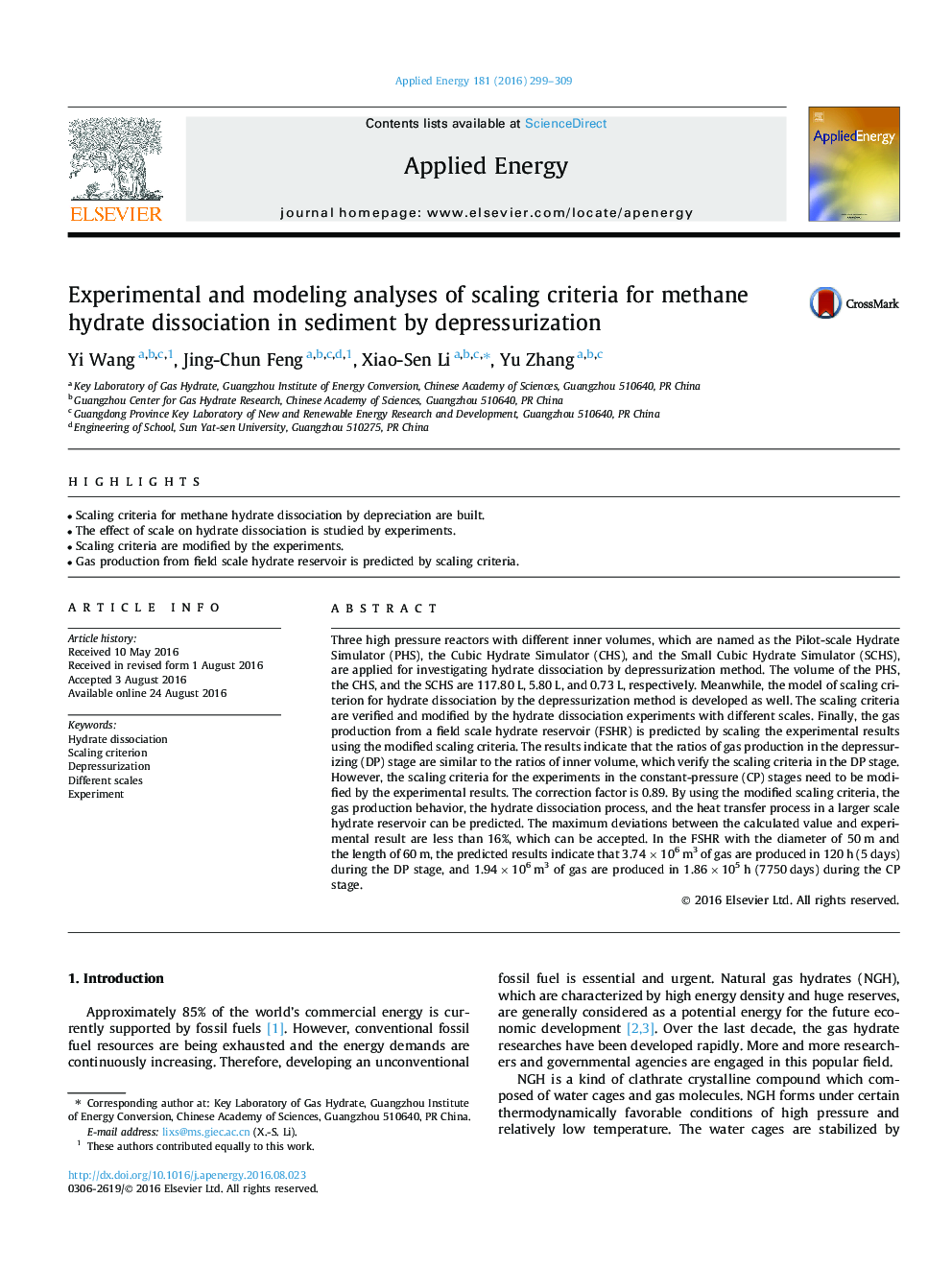| کد مقاله | کد نشریه | سال انتشار | مقاله انگلیسی | نسخه تمام متن |
|---|---|---|---|---|
| 4917159 | 1428107 | 2016 | 11 صفحه PDF | دانلود رایگان |
عنوان انگلیسی مقاله ISI
Experimental and modeling analyses of scaling criteria for methane hydrate dissociation in sediment by depressurization
ترجمه فارسی عنوان
تجزیه و تحلیل تجربی و مدل سازی معیارهای پوسته شدن برای جداسازی هیدرات متان در رسوب با کاهش فشار
دانلود مقاله + سفارش ترجمه
دانلود مقاله ISI انگلیسی
رایگان برای ایرانیان
کلمات کلیدی
تجزیه هیدرات معیار اندازه گیری، کاهش فشار، مقیاس های مختلف آزمایشی
موضوعات مرتبط
مهندسی و علوم پایه
مهندسی انرژی
مهندسی انرژی و فناوری های برق
چکیده انگلیسی
Three high pressure reactors with different inner volumes, which are named as the Pilot-scale Hydrate Simulator (PHS), the Cubic Hydrate Simulator (CHS), and the Small Cubic Hydrate Simulator (SCHS), are applied for investigating hydrate dissociation by depressurization method. The volume of the PHS, the CHS, and the SCHS are 117.80Â L, 5.80Â L, and 0.73Â L, respectively. Meanwhile, the model of scaling criterion for hydrate dissociation by the depressurization method is developed as well. The scaling criteria are verified and modified by the hydrate dissociation experiments with different scales. Finally, the gas production from a field scale hydrate reservoir (FSHR) is predicted by scaling the experimental results using the modified scaling criteria. The results indicate that the ratios of gas production in the depressurizing (DP) stage are similar to the ratios of inner volume, which verify the scaling criteria in the DP stage. However, the scaling criteria for the experiments in the constant-pressure (CP) stages need to be modified by the experimental results. The correction factor is 0.89. By using the modified scaling criteria, the gas production behavior, the hydrate dissociation process, and the heat transfer process in a larger scale hydrate reservoir can be predicted. The maximum deviations between the calculated value and experimental result are less than 16%, which can be accepted. In the FSHR with the diameter of 50Â m and the length of 60Â m, the predicted results indicate that 3.74Â ÃÂ 106Â m3 of gas are produced in 120Â h (5Â days) during the DP stage, and 1.94Â ÃÂ 106Â m3 of gas are produced in 1.86Â ÃÂ 105Â h (7750Â days) during the CP stage.
ناشر
Database: Elsevier - ScienceDirect (ساینس دایرکت)
Journal: Applied Energy - Volume 181, 1 November 2016, Pages 299-309
Journal: Applied Energy - Volume 181, 1 November 2016, Pages 299-309
نویسندگان
Yi Wang, Jing-Chun Feng, Xiao-Sen Li, Yu Zhang,
